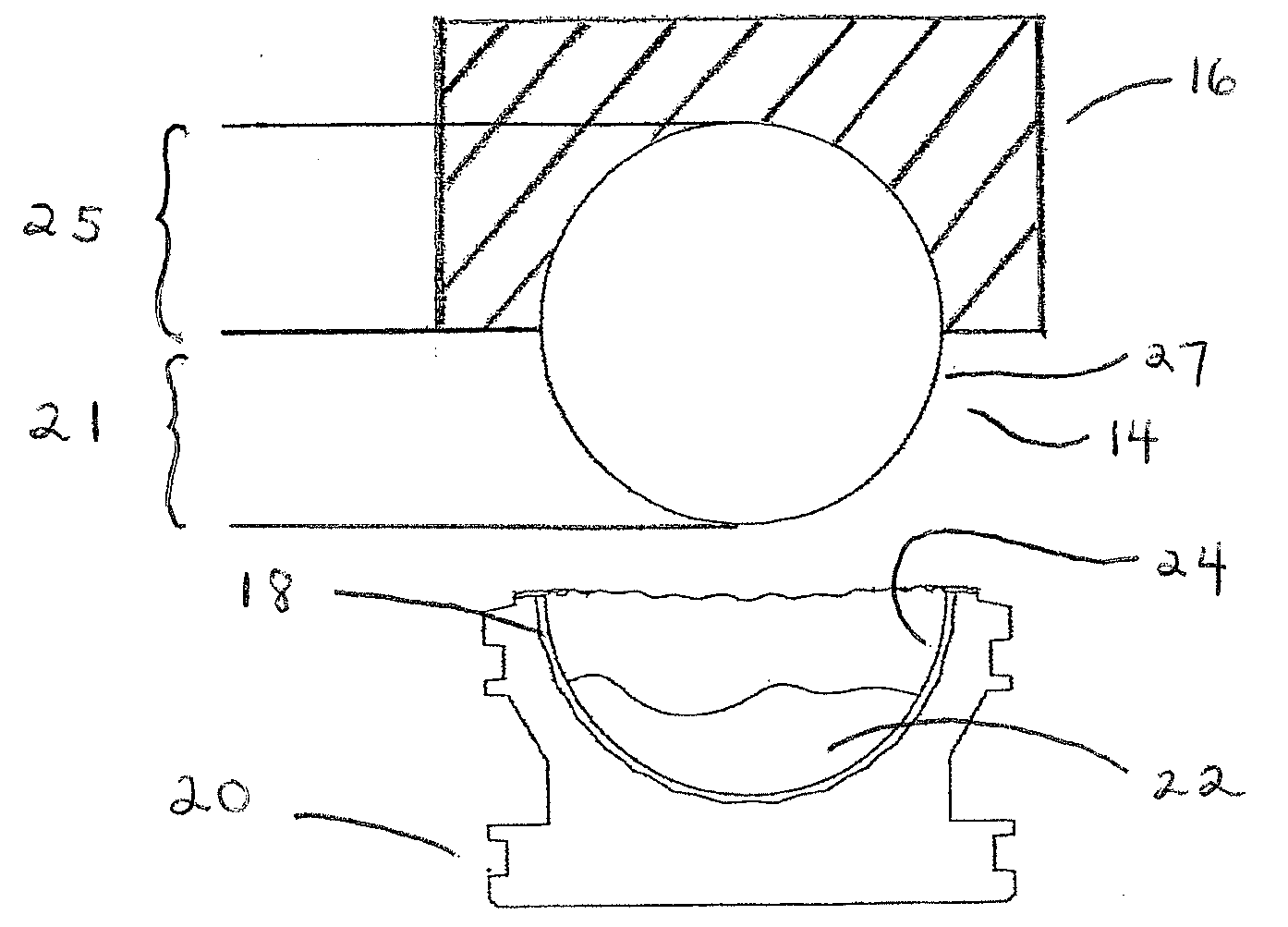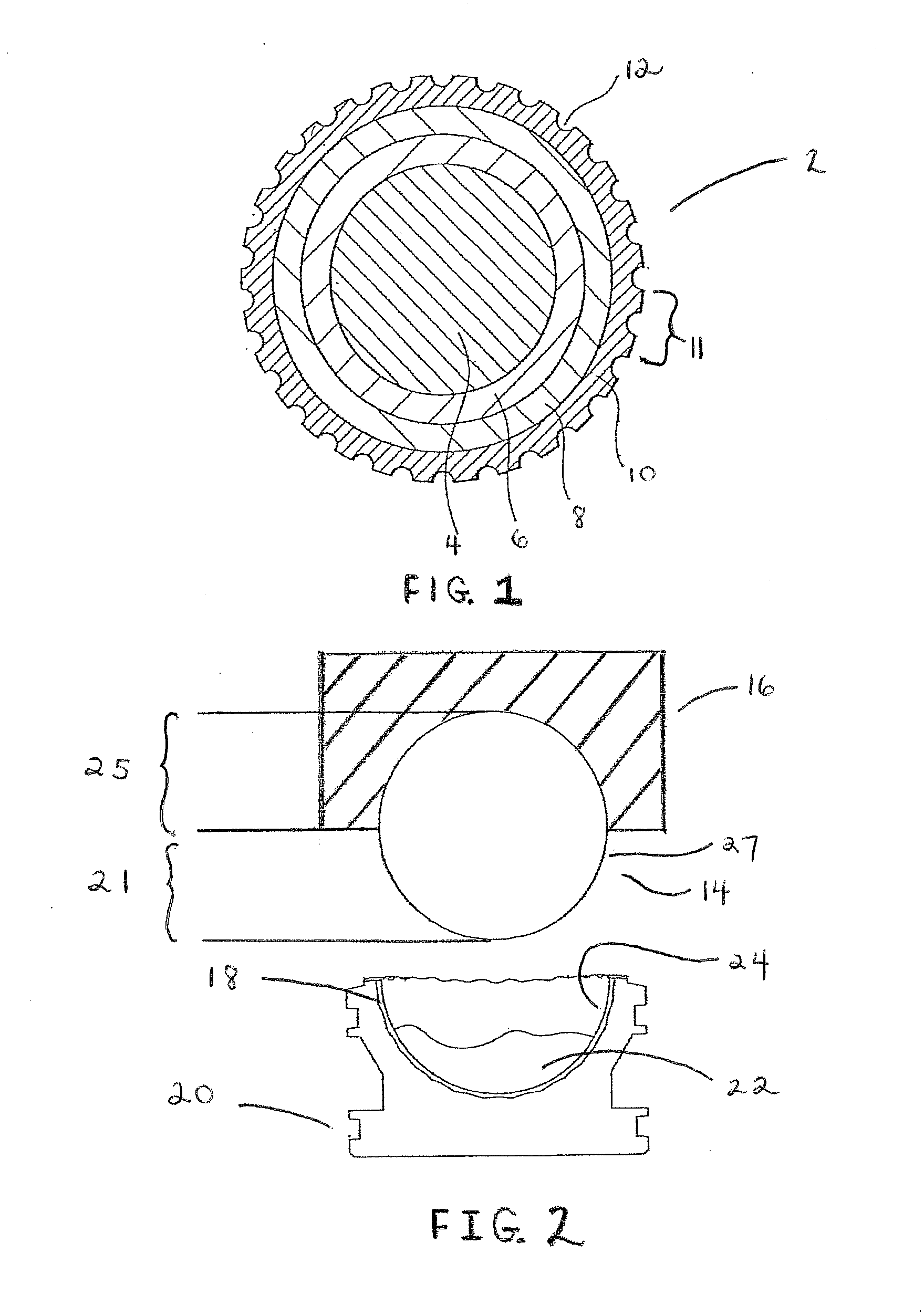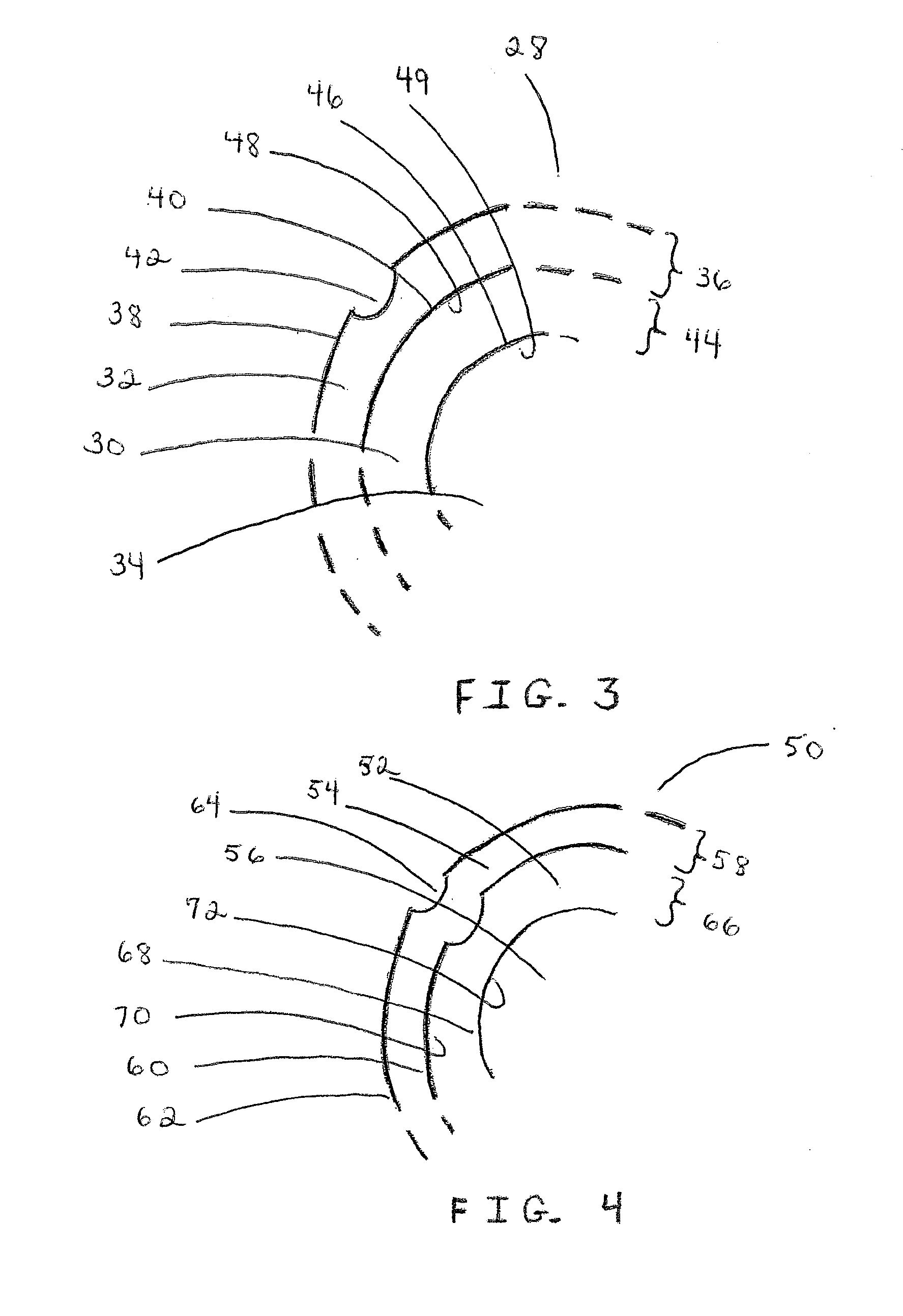Process for manufacturing golf balls having a multi-layered covers
a golf ball and cover technology, applied in the field of golf ball manufacturing, can solve the problems of lack of consistency in the thickness of the cover layer, deformation of the core, and inability to adapt well to the process, and achieve the effect of improving the overall contouring
- Summary
- Abstract
- Description
- Claims
- Application Information
AI Technical Summary
Benefits of technology
Problems solved by technology
Method used
Image
Examples
Embodiment Construction
[0048]The cores in golf balls manufactured by the process of this invention may be solid, semi-solid, hollow, fluid-filled, or powder-filled. Typically, the cores are solid and made from rubber compositions containing at least a base rubber, free-radical initiator agent, cross-linking co-agent, and fillers. Golf balls having various constructions may be made in accordance with this invention. For example, golf balls having three-piece, four-piece, and five-piece constructions with dual or three-layered cores and cover materials may be made The term, “layer” as used herein means generally any spherical portion of the golf ball. More particularly, in one version, a three-piece golf ball comprising a core and a “dual-cover” is made. In another version, a four-piece golf ball comprising a dual-core and “dual-cover” is made. The dual-core includes an inner core (center) and surrounding outer core layer. The dual-cover includes inner cover and outer cover layers. In yet another constructi...
PUM
| Property | Measurement | Unit |
|---|---|---|
| depth | aaaaa | aaaaa |
| depth | aaaaa | aaaaa |
| thickness | aaaaa | aaaaa |
Abstract
Description
Claims
Application Information
 Login to View More
Login to View More - R&D
- Intellectual Property
- Life Sciences
- Materials
- Tech Scout
- Unparalleled Data Quality
- Higher Quality Content
- 60% Fewer Hallucinations
Browse by: Latest US Patents, China's latest patents, Technical Efficacy Thesaurus, Application Domain, Technology Topic, Popular Technical Reports.
© 2025 PatSnap. All rights reserved.Legal|Privacy policy|Modern Slavery Act Transparency Statement|Sitemap|About US| Contact US: help@patsnap.com



